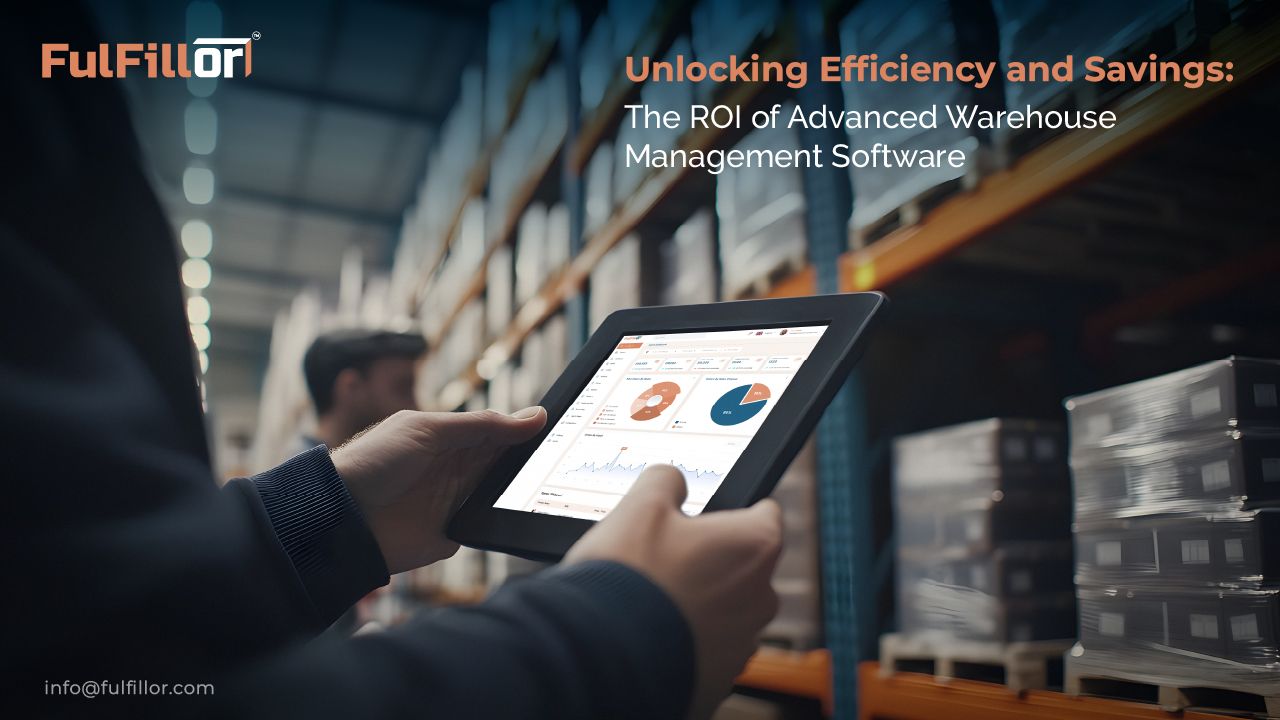2026 WMS Guide: Unlocking ROI with Advanced Warehouse Management Software
Try running a warehouse today without real-time visibility, and you're already two steps behind. Customer expectations? Faster than ever. Mistakes?
Unforgiving. That’s why more companies are turning to warehouse management software not because it’s trendy, but because it works. Yes, the upfront costs exist. There’s licensing, integration, onboarding. But once the dust settles, the returns don’t just trickle in they build momentum. And that momentum transforms how a warehouse breathes, moves, and competes.
What Warehouse Management Software Is and Isn’t
Warehouse management software isn't some plug-and-play magic wand. It’s a backbone. It keeps track of where things are, where they’re going, and what’s in the way. It guides workers through the maze of modern fulfillment—picking, packing, shipping with fewer errors and more control.
Most platforms connect easily with tools companies already use: ERP systems, transport tracking, and CRM dashboards. They don’t just operate inside the warehouse they touch everything connected to it.
How Warehouse Management Systems Improve Operational Efficiency

Lost inventory. Late orders. Overtime labor. These are not isolated problems—they’re symptoms of a system stretched too thin. When operations lack structure, everyone scrambles. Warehouse management systems bring order to that chaos.
Suddenly, workers don’t waste time doubling back for missing items. Barcode scans replace manual notes. Heat maps replace guesswork. The result? Fewer mistakes, faster shipments, and less apologizing to customers.
That’s not wishful thinking. The global warehouse management systems market is expected to leap from $2.88 billion in 2024 to $8.38 billion by 2030. And it’s not just the giants making this move small and mid-sized players are getting in early to stay competitive.
How Warehouse Management Software Solves Inventory Control Issues

And manual inventory checks? They’re just begging for human error. Warehouse inventory control becomes more manageable with a WMS that tracks stock movement in real time. Reordering gets automated. Replenishment isn’t reactive it’s smart, predictive, and precise. Need to implement just-in-time inventory? A WMS makes it not only possible, but reliable. The system flags aging products, keeps safety stock in check, and prevents overordering.
Better inventory visibility leads to less waste, better use of working capital, and a healthier cash flow.
How Warehouse Management Software Improves Labor Efficiency and ROI
You can’t scale a warehouse by simply hiring more hands. Labor is costly, and training new staff eats time. Warehouse management software helps stretch your labor force without stretching your budget. It’s not just about assigning tasks—it’s about doing it strategically. WMS tools consider proximity, urgency, and current workload before telling a worker where to go next. Because the interface is often visual and intuitive, new hires onboard quicker. Instead of two weeks of shadowing, they’re productive in a few days. And with performance dashboards built in, you can spot lag before it turns into loss.
How Warehouse Management Software Optimizes Warehouse Space

Square footage isn’t cheap. Yet most warehouses operate with layouts that don’t actually serve their volume or flow. Warehouse management systems help solve this too. With slotting logic, products are stored based on frequency and size. Popular items live close to packing stations. Bulk items stay out of the way but easy to access when needed. Some WMS platforms even allow virtual simulations of different layouts, so changes can be tested before forklifts start moving pallets. That means companies can delay expansion—and avoid pouring cash into a bigger building they don’t really need yet.
How Warehouse Management Systems Reduce Delays and Improve Fulfillment Speed
Speed wins deals. Delays break them. Whether B2B or B2C, customers expect quick, accurate shipments. Lag anywhere along the way causes a ripple. Warehouse management systems close those gaps. They align inbound and outbound schedules. They identify bottlenecks before they snowball. And they make sure high-priority orders get the attention they need, right when they need it. With real-time alerts and dashboards, managers aren’t reacting—they’re anticipating. That’s how lead times shrink and throughput grows, without hiring more people or renting more space.
Scaling Without Breaking Things

Growth often breaks what was working. A new product line. A second location. Ten times the order volume. Suddenly your warehouse feels like a fire drill.
The best warehouse management software isn’t rigid. It scales. It absorbs new complexity without demanding a total systems reboot. Cloud-based solutions especially allow for gradual rollout—add new users, SKUs, or rules without chaos.
Even better, many modern WMS platforms are built to support next-gen tools: robotics, AI forecasts, digital twin simulations. That’s future-proofing in action.
Key Performance Metrics That Show the ROI of Warehouse Management Systems
Any system can promise ROI. But WMS platforms deliver it in data. Here’s what businesses often see:
- Order picking accuracy goes from 92% to 99%.
- Inventory accuracy improves from 85% to 98%.
- Fulfillment speeds jump by 10–20%.
- Labor utilization increases by up to 25%.
- Returns and rework? Dramatically reduced.
These aren’t marketing numbers. They’re metrics reported by companies tracking performance after implementation. And when those numbers are tied to revenue-per-square-foot or cost-per-order, the savings become hard to ignore.
Many companies recover their initial investment in warehouse management systems within 12 to 24 months.
Common Warehouse Management System Implementation Challenges
Let’s be honest change is hard. Even the best software won’t succeed without support. Staff may push back. Data migration may get messy. Processes may slow down before they speed up. But those hurdles are temporary. And the right implementation strategy—clear goals, phased rollouts, internal advocates, makes all the difference. The key? Don’t treat WMS as a tech upgrade. Treat it as an operations transformation.
How Warehouse Management Systems Impact the Entire Business
WMS doesn’t only impact what's inside the warehouse. The effects ripple across the company.
Sales teams get clearer inventory forecasts, which means fewer promises they can’t keep. Finance teams get better data for planning. Marketing can push campaigns confidently, knowing product availability isn’t a gamble. Even sustainability efforts benefit. Fewer errors mean fewer returns. Better shipment planning means fewer trucks. That all adds up. In some cases, custom warehouse management systems integrate directly with CRMs. That gives teams insights into customer buying behavior helpful for promotions, upselling, and retention.
Why Investing in Warehouse Management Software Is Critical in 2026
This isn’t just about staying efficient. It’s about staying relevant. As the global warehouse management systems market continues to scale, the gap between optimized and outdated operations grows wider. Selecting the best warehouse management software isn’t just a box to check it’s a decision that defines how a company scales, competes, and survives volatility.
Margins are shrinking. Expectations are rising. Complexity isn’t going away. The return on warehouse software goes beyond savings it shows up in speed, accuracy, adaptability, and confidence.
Final Thoughts on Warehouse Management Software and ROI
Warehouse management systems don’t just organize shelves. They reorganize entire strategies. When implemented right, they become less of a tool and more of a compass guiding companies through demand surges, staffing gaps, and inventory chaos. In an industry where every second and every cent matters, that’s not just ROI it’s peace of mind.
Schedule a call with our experts to learn how Fulfillor 3PL WMS can support your 3PL or warehouse operations.

